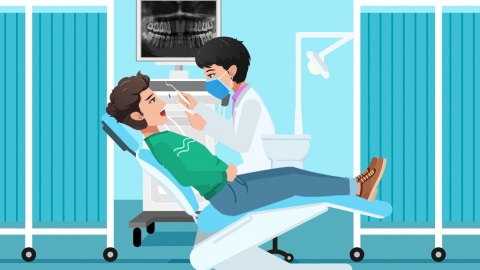What should I do if my tooth extraction site keeps bleeding?
If the wound is large or there is impaired blood clotting, patients may experience continuous bleeding after tooth extraction. Measures such as applying pressure to stop the bleeding, packing the wound, cold compresses, medication, or seeking medical treatment for suturing may be used to control the bleeding. If abnormalities occur, prompt medical attention is recommended. Detailed explanations are as follows:

1. Pressure hemostasis: Bite down firmly on a clean cotton ball or gauze placed over the bleeding extraction site, maintaining pressure until the bleeding stops. This method slows blood flow through local compression and promotes the formation of a blood clot.
2. Packing hemostasis: If simple pressure hemostasis proves ineffective, materials such as sponges or gelatin sponges can be used for packing. In cases of severe bleeding caused by jawbone lesions, bone wax, gelatin sponges, or iodoform gauze strips may be packed into the alveolar socket.
3. Cold compress: Applying an ice pack or cold towel to the cheek can cause constriction of capillaries and aid in stopping the bleeding. Cold compresses also help reduce swelling and relieve pain. However, the duration of cold application should not be too long to avoid skin frostbite.
4. Medication: Under a doctor's guidance, medications such as metronidazole tablets, sanqi tablets, or tranexamic acid tablets may be taken to assist in controlling the bleeding. Metronidazole also helps prevent infection.
5. Medical treatment and suturing: If bleeding continues unabated or the amount of bleeding is significant, or even if a blood clot has formed, seek immediate medical attention. Depending on the specific situation, doctors may perform suturing or use specialized instruments to achieve hemostasis.
Additionally, strenuous activity should be avoided after tooth extraction to prevent increased blood circulation and delay the clotting process.





